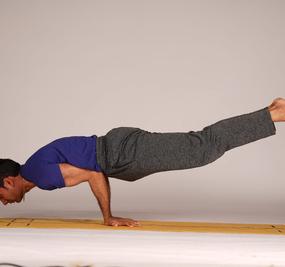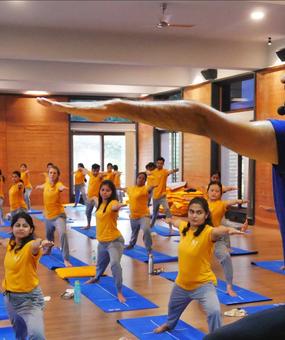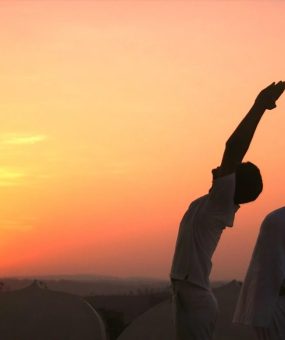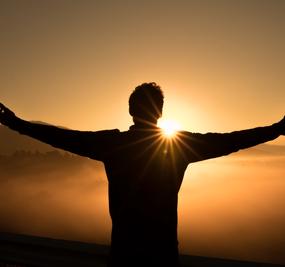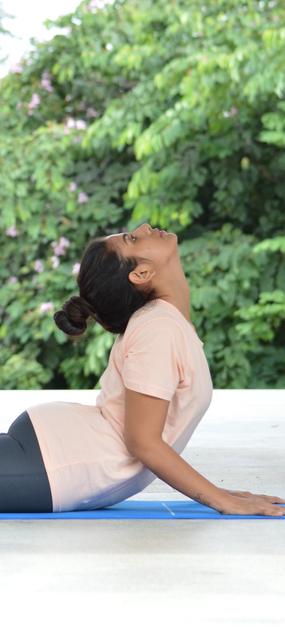What to Expect in Your 200-Hour Yoga Teacher Training: The Complete Program Experience
Starting a 200-hour Yoga Teacher Training (YTT) is like setting off on a special journey—one that takes you into ancient teachings and also gives you the tools to truly teach yoga today. This kind of training doesn’t just change how you do yoga; it changes how you see yourself and your connection to the world.
You’ll dive into things like yoga postures (asanas), breathing techniques (pranayama), meditation, anatomy, and the ethical side of yoga in daily life. There’s a balance between physical practice and learning the history, philosophy, and spiritual roots. Programs usually also include hands-on teaching practice and feedback sessions.
Many training sessions happen over a few weeks (intensively), while some stretch across months, giving you time to absorb more gradually.
What This Comprehensive Guide Covers:
- Comprehensive program structure and learning methodologies
- Integration of classroom theory with practical experience
- Teaching practice development and confidence building
- The transformative power of Seva (selfless service)
- Personal practice evolution throughout training
- Sri Sri School of Yoga’s distinctive Sudarshan Kriya integration
- Scientific research supporting program methodologies
- Preparation strategies and post-graduation pathways
Why Is 200-Hour Training the Global Standard?
The Yoga Alliance established 200 hours as the minimum foundation for teaching certification, representing a carefully calibrated balance between depth and accessibility. This standard has helped to professionalize the industry, which is now seeing a significant surge in interest globally. For example, in the United States, over 38 million adults practice yoga. In India, yoga’s birthplace, a recent survey revealed that over 41% of respondents have incorporated yoga into their lifestyle. This rapidly growing global community is seeking authentic instruction rooted in traditional wisdom yet relevant to contemporary life.
The Vedic tradition speaks of “Guru Brahma, Guru Vishnu, Guru Maheshwara” – acknowledging the teacher as creator, sustainer, and transformer. Your training prepares you for this sacred responsibility while honoring both ancient lineages and modern scientific understanding.
What to Expect During Your Comprehensive Program
Joining a 200-hour yoga teacher training is more than just learning poses — it’s an experience that can shift the way you practice yoga and even how you live day to day. You’ll explore movement, breath, meditation, and philosophy in a way that builds confidence on the mat and prepares you to share yoga with others. By the end, you don’t just feel stronger as a practitioner — you step into the role of teacher with clarity and purpose.
Classroom Learning + Practical Experience Integration
Your training masterfully balances theoretical knowledge with immersive hands-on practice, creating a learning environment that honors both intellectual understanding and embodied wisdom.
Theoretical Foundation Sessions
In structured classroom settings, you’ll explore the profound philosophical underpinnings of yoga through systematic study of foundational texts:
The Yoga Sutras of Patanjali – These 196 verses, compiled around 400 CE, outline the complete yogic path. Patanjali’s definition of yoga as “cessation of fluctuations in the mind” (Yoga Sutra 1.2) becomes your guiding principle for both personal practice and teaching others.
The Bhagavad Gita – This dialogue between Prince Arjuna and Lord Krishna reveals three primary yogic paths: Karma Yoga (action), Bhakti Yoga (devotion), and Jnana Yoga (knowledge). Understanding these pathways helps you recognize and serve different student temperaments and spiritual inclinations.
The Upanishads – These philosophical treatises explore the nature of consciousness and reality. The fundamental teaching “Tat tvam asi” (Thou art That) emphasizes yoga’s ultimate goal of recognizing our true divine nature.
Hatha Yoga Pradipika – This classical text details physical practices, pranayama techniques, and energetic principles that inform modern asana practice.
Practical Application Sessions
Theoretical learning immediately translates into experiential practice through:
- Guided asana sessions exploring alignment principles
- Pranayama practice, including classical and contemporary techniques
- Meditation instruction
How Do Theory and Demonstration Create Mastery?
Comprehensive Theoretical Curriculum
Your intellectual foundation encompasses multiple interconnected domains:
Anatomy and Physiology Deep Dive
Understanding how yoga affects bodily systems becomes paramount for safe, effective teaching:
- Musculoskeletal System: Bone structure, joint mechanics, and muscle function
- Respiratory System: Breath anatomy and pranayama’s physiological effects
- Nervous System: Stress response, relaxation mechanisms, and yoga’s neurological benefits
- Cardiovascular System: Heart health and circulation improvements through practice
- Endocrine System: Hormonal balance and glandular health optimization
A substantial body of research, including studies published in journals like the International Journal of Yoga, consistently shows that regular asana practice leads to significant physical improvements. Studies indicate that as little as 8-12 weeks of consistent practice can lead to measurable improvements in flexibility, muscular strength, and balance, which are key components of physical fitness and injury prevention.
Yoga Philosophy and Psychology
Ancient wisdom traditions provide the ethical and spiritual framework for authentic teaching:
Teaching Methodology and Pedagogy
Effective instruction requires understanding how people learn and grow:
- Learning Style Recognition: Visual, auditory, and kinesthetic approaches
- Class Sequencing Principles: Safe progression and energetic flow
- Modification Strategies: Adapting practices for diverse populations
- Trauma-Informed Teaching: Creating safe spaces for all students
- Business Ethics: Professional boundaries
Demonstration and Embodied Learning
Experienced faculty demonstrate not just how poses appear, but how they function within the complete yogic system. You’ll develop:
Physical Competency through proper alignment, breath integration, and energetic awareness Teaching Presence via clear communication, confident demonstration, and authentic connection Safety Expertise including injury prevention, modification skills, and emergency protocols Spiritual Transmission by embodying yoga’s deeper principles in your teaching presence
What Teaching Practice Opportunities Transform You?
Advanced Lesson Planning and Sequencing
You’ll master the sophisticated art of creating therapeutic, transformative class experiences that serve diverse student populations:
Intelligent Sequencing Principles
- Energetic Arc: Understanding how to build, sustain, and integrate energy throughout class
- Peak Pose Development: Systematic preparation for challenging postures
- Therapeutic Applications: Addressing common physical and emotional conditions
- Seasonal and Cyclical Awareness: Adapting practice to natural rhythms
- Pranayama Integration: Weaving breath techniques seamlessly throughout sessions
Population-Specific Adaptations
- Beginner-Friendly Progressions: Building confidence and competence gradually
- Senior-Focused Modifications: Honoring aging bodies with respect and wisdom
- Injury-Adaptive Approaches: Working skillfully with physical limitations
- Pregnancy Considerations: Safe practice for expectant mothers
- Mental Health Applications: Using yoga therapeutically for anxiety and depression
Small Group Teaching Excellence
Teaching fellow trainees provides invaluable practice in a supportive, growth-oriented environment where vulnerability becomes strength
Confidence Building Through Support
- Constructive Feedback Culture: Learning to give and receive guidance gracefully
- Peer Mentorship: Supporting each other’s growth journey
- Vulnerability Practice: Embracing imperfection as learning opportunity
- Authentic Voice Development: Finding your unique teaching expression
Individualized Attention and Therapeutic Skills
The program extensively trains you in providing personalized guidance that honors each student’s unique needs, limitations, and aspirations:
Assessment and Adaptation Skills
- Postural Analysis: Reading body alignment and compensation patterns
- Modification Mastery: Offering appropriate variations instantly
- Hands-On Adjustment: Safe, consensual physical guidance techniques
- Verbal Cueing Precision: Clear, inspiring instruction delivery
Remember Patanjali’s profound teaching: “Practice is firmly grounded when cultivated continuously over a long period with dedication” (Yoga Sutra 1.14). Your teaching skills develop through patient, consistent application rather than overnight transformation.
How Does Seva Transform Your Understanding?
Seva, or selfless service, is at the core of true yoga practice. It’s about realizing that the growth we experience on the mat isn’t just for us — it’s also a way to support and uplift others.
Philosophical Foundations of Service
The Bhagavad Gita extensively explores the concept of Nishkama Karma – action performed without attachment to personal gain. Krishna teaches Arjuna: “You have the right to perform your actions, but not to the fruits of your actions”. This principle transforms teaching from ego-driven performance into sacred offering.
“karmaṇyevādhikāraste mā phaleṣu kadācana | mā karmaphalaheturbhūrmā te saṅgo’stvakarmaṇi ||”
~ Bhagavad Gita 2.47
The opening verse, Isha Upanishad 1.1, is a powerful statement about the nature of the universe and our place within it. The Sanskrit is:
“īśāvāsyamidaṃ sarvaṃ yatkiñca jagatyāṃ jagat | tena tyaktena bhuñjīthā mā gṛdhaḥ kasyasviddhanam ||”
This translates to: “All this—whatever exists in this changing universe—is pervaded by the Supreme Being. Therefore, find your enjoyment in renunciation; do not covet what belongs to others.” The principle of “tena tyaktena bhuñjīthā” (enjoy through renunciation) is a foundational concept that links personal practice to a service-oriented worldview. It teaches that true enjoyment comes not from clinging to things but from using them with a spirit of detachment and recognizing their ultimate divine source.
Seva’s Deeper Transformative Impact
Through consistent selfless service, the illusion of separation gradually dissolves. You begin experiencing what the Vedas call Vasudhaiva Kutumbakam – “the world is one family.” This shift from individual focus to collective consciousness fundamentally transforms your approach to teaching and living.
Sri Sri School of Yoga emphasizes seva as the path to personal fulfillment and social transformation. This understanding helps you recognize teaching as a sacred service rather than a mere profession, creating profound meaning in your work and deeper connections with students.
Research consistently shows that engaging in selfless service (Seva) offers significant benefits for mental and emotional well-being.
Volunteering is proven to:
- Reduce stress and enhance overall life satisfaction.
- Strengthen social connections by providing opportunities to build community.
- Cultivate a sense of purpose by allowing individuals to contribute to a cause larger than themselves.
How Does Personal Practice Evolution Support Teaching?
Self-Practice as Teaching Foundation
Throughout your training, developing and refining personal practice becomes the bedrock of authentic instruction. The ancient tradition emphasizes that teachers can only guide students as far as they themselves have traveled.
What Makes Sri Sri School of Yoga Distinctively Transformative?
Sri Sri School of Yoga stands apart through its masterful integration of ancient wisdom traditions with cutting-edge wellness science. This creates an educational experience that simultaneously transforms students at cellular, psychological, and spiritual levels.
Gurudev Sri Sri Ravi Shankar’s revolutionary teachings permeate every aspect of the curriculum:
Practical Philosophy: Ancient wisdom becomes immediately applicable through simple, profound insights that transform daily life experience.
Stress-Free Living: Specific techniques for maintaining equanimity amidst modern life’s challenges and responsibilities.
Conscious Leadership: Training that develops not just yoga teachers, but conscious leaders capable of inspiring positive social change.
Global Perspective: Understanding yoga as a universal science for human development rather than a culturally limited practice.
What Challenges Should You Anticipate and How to Navigate Them?
Physical Adaptation Period
Common Physical Experiences
- Muscle Soreness: Natural response to increased practice intensity
- Energy Fluctuations: Temporary fatigue as systems recalibrate
- Dietary Adjustments: Possible digestive changes with cleaner eating
- Sleep Pattern Shifts: Earlier rising and deeper rest needs
Effective Management Strategies
- Gradual Progression: Honor your body’s adaptation timeline
- Modification Utilization: Use props and variations appropriately
- Rest Integration: Balance effort with adequate recovery
- Talk to your mentors: Address persistent issues with your teachers
Emotional and Mental Processing
Typical Psychological Experiences
- Emotional Release: Stored tensions surfacing during practice
- Identity Questioning: Shifting perspectives on self and life priorities
- Relationship Changes: Evolving dynamics with yourself and others
- Future Uncertainty: Anxiety about post-training direction
Healthy Processing Approaches
- Talk to your teachers: Your mentors are the best guide
- Peer Community: Sharing experiences with fellow trainees
- Patience Practice: Allowing transformation to unfold naturally
A Few of Your Biggest Questions, Answered
1. Is a 200-hour YTT really enough to start teaching?
Yes, a 200-hour certification is the globally recognized entry-level standard for a yoga teacher. It provides you with a strong foundation in philosophy, anatomy, and teaching methodology to lead safe and effective beginner-level classes.
2. What if I’m not flexible enough?
Flexibility is not a prerequisite. In fact, many people who are not naturally flexible make excellent teachers because they are better able to understand and guide students with similar challenges. The training is about strength, knowledge, and inner work, not just physical poses.
3. What is the typical program schedule like?
A residential program is highly structured, with a typical day starting as early as 6:00 AM for practice and continuing with lectures, teaching practice, and self-study until the evening.
4. Will I be able to find a job after?
The yoga industry is booming, with a global market size projected to reach over $270 billion by 2034. The demand for qualified instructors is on the rise, particularly for those with a strong foundation in both the physical and philosophical aspects of yoga.
A 200-hour YTT is more than just a course; it’s an investment in yourself. It’s an opportunity to transform your life and become a source of positive change for others. If you are seeking a training that is authentic, holistic, and deeply rooted in a rich lineage, consider the Sri Sri School of Yoga. Our meticulously designed curriculum provides a balance of ancient wisdom and modern teaching techniques, empowering you to become a confident and compassionate yoga teacher.




